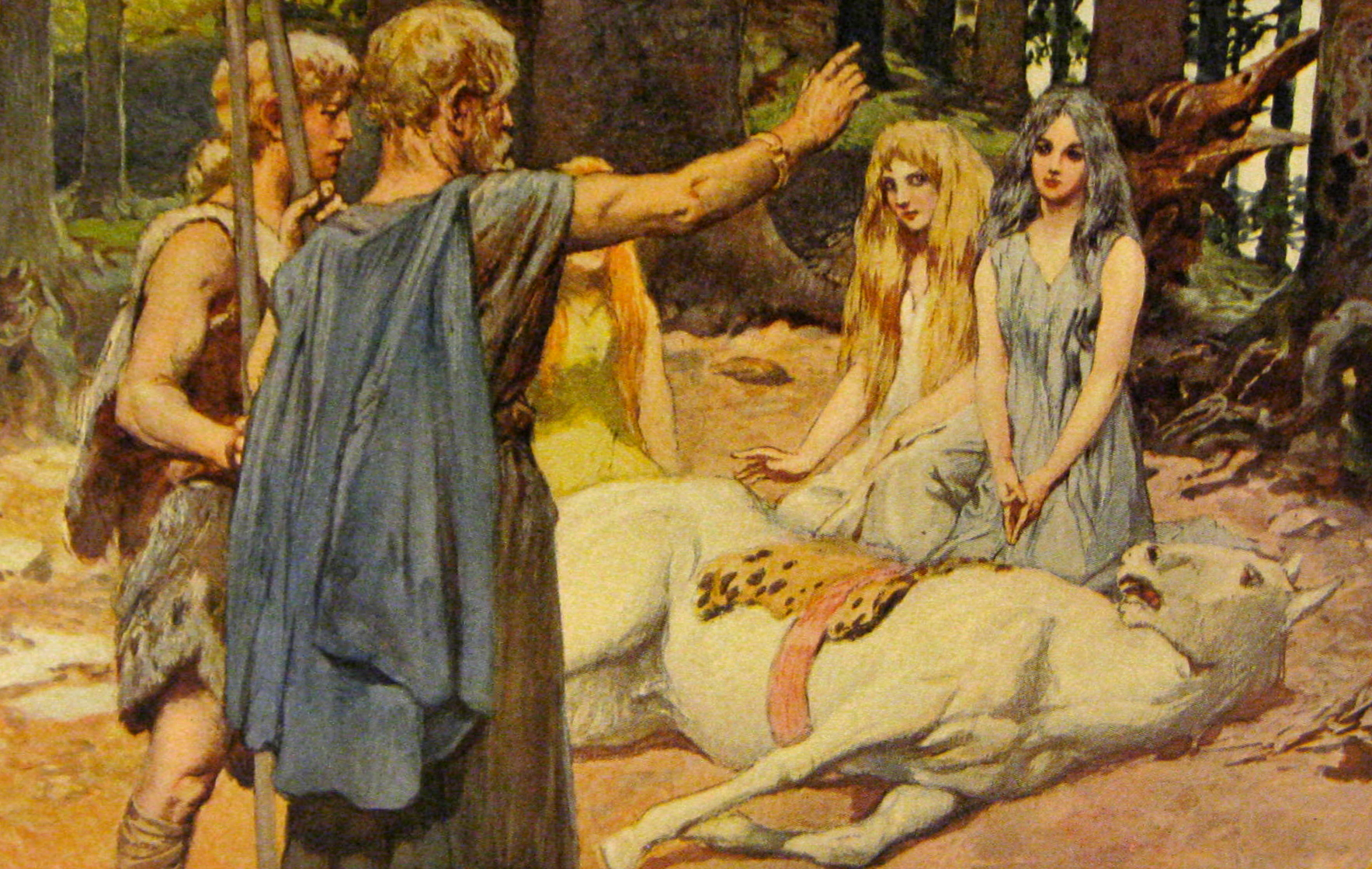|
Gná And Hófvarpnir
In Norse mythology, Gná (Old Norse: ) is a goddess who runs errands in other worlds for the goddess Frigg and rides the flying, sea-treading horse Hófvarpnir (O.N.: , "he who throws his hoofs about",Simek (2007:157). "hoof-thrower"Lindow (2001:146). or "hoof kicker"Byock (2005:43).). Gná and Hófvarpnir are attested in the ''Prose Edda'', written in the 13th century by Snorri Sturluson. Scholarly theories have been proposed about Gná as a "goddess of fullness" and as potentially cognate to Fama from Roman mythology. Hófvarpnir and the eight-legged steed Sleipnir have been cited examples of transcendent horses in Norse mythology. Attestations In chapter 35 of the ''Prose Edda'' book ''Gylfaginning'', the enthroned figure of High provides brief descriptions of 16 ásynjur. High lists Gná thirteenth, and says that Frigg sends her off to different worlds to run errands. High adds that Gná rides the horse Hófvarpnir, and that this horse has the ability to ride through the air ... [...More Info...] [...Related Items...] OR: [Wikipedia] [Google] [Baidu] |
Frigg By Doepler
Frigg (; Old Norse: ) is a goddess, one of the Æsir, in Germanic mythology. In Norse mythology, the source of most surviving information about her, she is associated with marriage, prophecy, clairvoyance and motherhood, and dwells in the wetland halls of Fensalir. In wider Germanic mythology, she is known in Old High German as , in Langobardic as , in Old English as , in Old Frisian as ''Frīa'', and in Old Saxon as , all ultimately stemming from the Proto-Germanic theonym *''Frijjō''. Nearly all sources portray her as the wife of the god Odin. In Old High German and Old Norse sources, she is specifically connected with Fulla, but she is also associated with the goddesses Lofn, Hlín, Gná, and ambiguously with the Earth, otherwise personified as an apparently separate entity Jörð (Old Norse: 'Earth'). The children of Frigg and Odin include the gleaming god Baldr. The English weekday name Friday (ultimately meaning 'Frigg's Day') bears her name. After Christianization, t ... [...More Info...] [...Related Items...] OR: [Wikipedia] [Google] [Baidu] |
Skáldskaparmál
''Skáldskaparmál'' (Old Norse: 'The Language of Poetry'; c. 50,000 words; ; ) is the second part of the ''Prose Edda''. The section consists of a dialogue between Ægir, the divine personification of the sea, and Bragi, the god of poetry, in which both Norse mythology and discourse on the nature of poetry are intertwined. The origin of a number of ''kennings'' is given; then Bragi delivers a systematic list of ''kennings'' for various people, places and things. He then goes on to discuss poetic language in some detail, in particular ''heiti'', the concept of poetical words which are non-periphrastic (like ''steed'' for ''horse''), and again systematises these. This in a way forms an early form of poetic thesaurus. References Bibliography * Further reading * Anthony Faulkes"The sources of ''Skáldskaparmál'': Snorri’s intellectual background" in: Alois Wolf (ed.), ''Snorri Sturluson'', Volume 51 of ScriptOralia, Gunter Narr Verlag (1993), 59–76. External ... [...More Info...] [...Related Items...] OR: [Wikipedia] [Google] [Baidu] |
Translated From The Fourth Edition With Notes And Appendix By James Stallybrass
Translation is the communication of the meaning of a source-language text by means of an equivalent target-language text. The English language draws a terminological distinction (which does not exist in every language) between ''translating'' (a written text) and ''interpreting'' (oral or signed communication between users of different languages); under this distinction, translation can begin only after the appearance of writing within a language community. A translator always risks inadvertently introducing source-language words, grammar, or syntax into the target-language rendering. On the other hand, such "spill-overs" have sometimes imported useful source-language calques and loanwords that have enriched target languages. Translators, including early translators of sacred texts, have helped shape the very languages into which they have translated. Because of the laboriousness of the translation process, since the 1940s efforts have been made, with varying degre ... [...More Info...] [...Related Items...] OR: [Wikipedia] [Google] [Baidu] |



